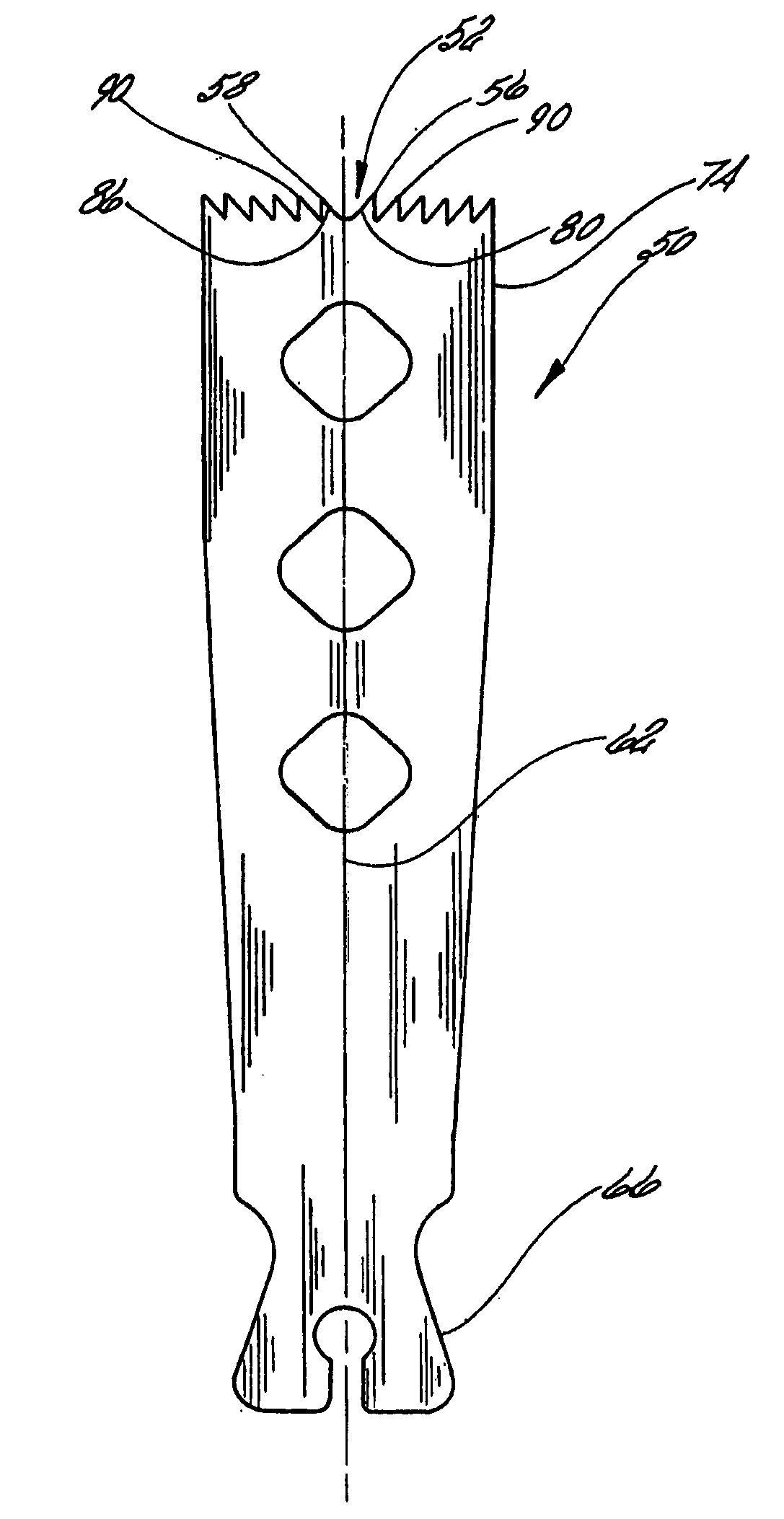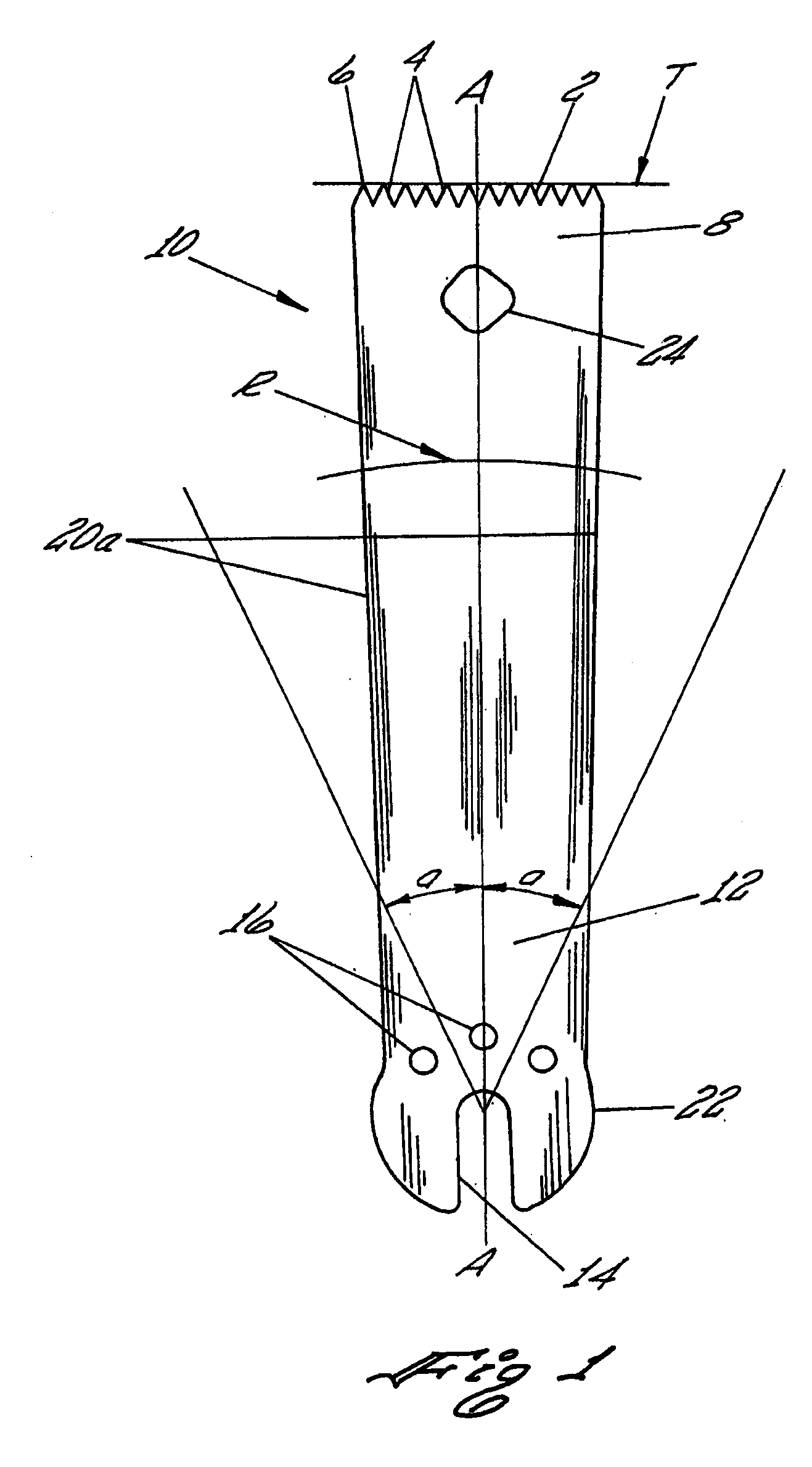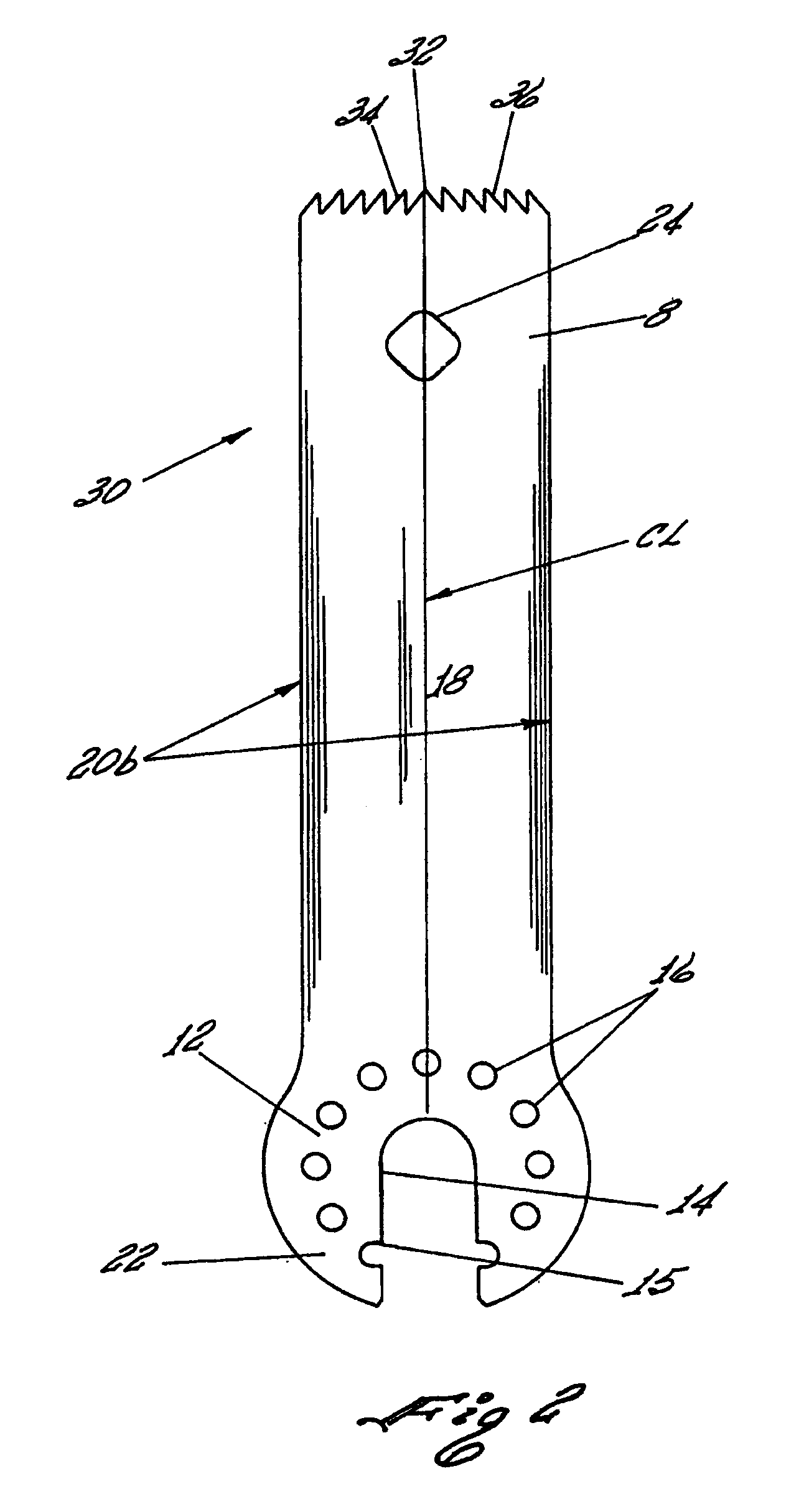Surgical saw blade having at least one pair of opposed teeth shaped as right triangles
a technology of opposed teeth and surgical saw blades, which is applied in the direction of power driven reciprocating saws, metal sawing devices, manufacturing tools, etc., can solve the problems of increased fatigue of surgeons, increased heat buildup, and increased cutting accuracy, so as to minimize backlash and kick, reduce thermal necrosis, and minimize the degree of heat buildup
- Summary
- Abstract
- Description
- Claims
- Application Information
AI Technical Summary
Benefits of technology
Problems solved by technology
Method used
Image
Examples
Embodiment Construction
[0042]Referring now to the figures, wherein like reference numerals denote to like parts throughout the various figures, reference numeral 10 is directed to the straight saw blade according to one form of the invention, reference numeral 30 is directed to the reverse opposed blade according to the second form of the invention and reference numeral 40 is directed to the outwardly opposed blade according to a third form of the invention.
[0043]The straight saw blade 10 of FIG. 1 and according to the present invention includes a distal end 8 upon which a plurality of teeth 2 are positioned and a proximal end 12 which is adapted to coact with and attach to an oscillatory (or sagittal) surgical power tool (not shown).
[0044]More specifically, the proximal end 12 has a somewhat bulbous terminus 22 that includes a slot 14 running along the long axis A of the saw blade 10. In addition, a plurality of holes 16 circumscribe portions of the slot adjacent the bulbous terminus 22 to further facili...
PUM
| Property | Measurement | Unit |
|---|---|---|
| Rockwell hardness | aaaaa | aaaaa |
| included angle | aaaaa | aaaaa |
| angle | aaaaa | aaaaa |
Abstract
Description
Claims
Application Information
 Login to View More
Login to View More - R&D
- Intellectual Property
- Life Sciences
- Materials
- Tech Scout
- Unparalleled Data Quality
- Higher Quality Content
- 60% Fewer Hallucinations
Browse by: Latest US Patents, China's latest patents, Technical Efficacy Thesaurus, Application Domain, Technology Topic, Popular Technical Reports.
© 2025 PatSnap. All rights reserved.Legal|Privacy policy|Modern Slavery Act Transparency Statement|Sitemap|About US| Contact US: help@patsnap.com



